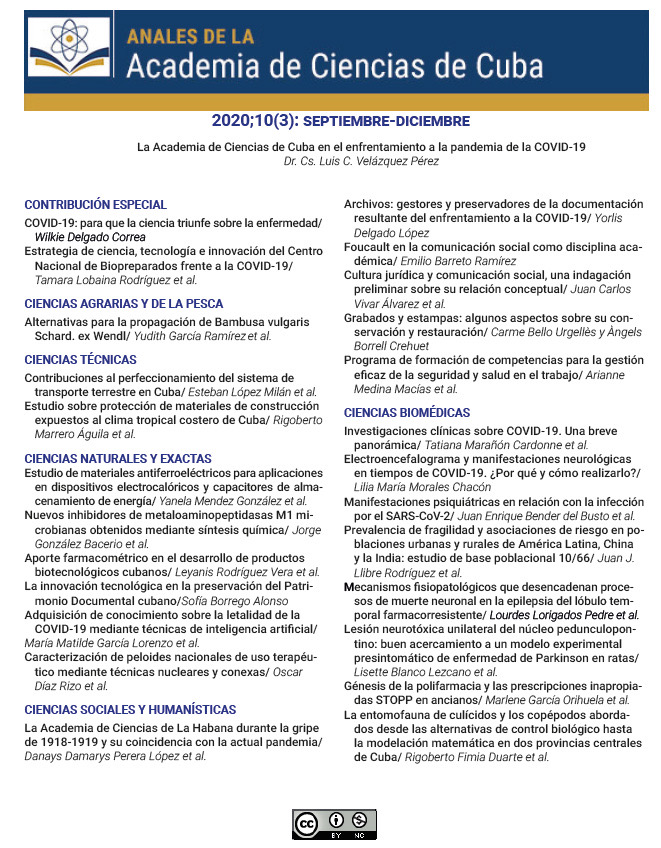Characterization of national therapeutic peloids using nuclear and related techniques
Keywords:
peloids, elemental composition, radionuclides, speciation, CubaAbstract
Introduction: Cuba has a large reserve of natural peloids, specifically of coastal, saline and hydrothermal origin. Currently, peloid-based therapy is included in the national integral rehabilitation system, starting from the secondary level of health care. However, the current status of the chemical characterization of such peloids in Cuba is rather poor. Even though a Cuban Norm for Peloids exists, its scope is limited, because it does not regulate the permissible limits for organic compound and inorganic elements (including radionuclides) present in the peloids, as indicators of pollution and potential toxicity for humans. Objectives: To develop a procedure involving nuclear and nuclear-related techniques that enables the physicochemical characterization of the main natural peloids being used for therapeutic purposes in the country.Methods: The combination of determining the physicochemical parameters, the inorganic/organic and radiological composition, as well as the morphological and structural characteristics in order to assess the quality of the main national peloids.
Results: For the first time, the organic, inorganic and radiological characterization of the main Cuban peloids has been studied, allowing the evaluation of the peloid's quality based on established radiological norms and values from international guidelines for sediments and cosmetic products guidelines. This study provides the scientific basis for the development of future regulations for the therapeutic use of peloids.
Conclusions: The physicochemical characterization performed on national peloids permitted their classification as non-contaminated in relation to the determined trace elements and to the identified organic compounds. On the other hand, the determined levels of equivalent radioactive dose do not exceed the levels for occupationally exposed persons or therapy users, established by the international regulatory organisms. A scientific basis for the preparation of future regulations for the therapeutic use of national peloids was provided.
Downloads
Published
How to Cite
Issue
Section
License
The journal Anales de la Academia de Ciencias de Cuba protects copyright, and operates with a Creative Commons License 4.0 (Creative Commons Attribution-NonCommercial License 4.0). By publishing in it, authors allow themselves to copy, reproduce, distribute, publicly communicate their work and generate derivative works, as long as the original author is cited and acknowledged. They do not allow, however, the use of the original work for commercial or lucrative purposes.
The authors authorize the publication of their writings, retaining the authorship rights, and assigning and transferring to the magazine all the rights protected by the intellectual property laws that govern in Cuba, which imply editing to disseminate the work.
Authors may establish additional agreements for the non-exclusive distribution of the version of the work published in the journal (for example, placing it in an institutional repository or publishing it in a book), with recognition of having been first published in this journal.
To learn more, see https://creativecommons.org






